Introduction
Sanjeev Sanyal is an acclaimed Indian author, economist, and urban theorist. He has written several books that have gained recognition for their unique perspectives on Indian history, geography, and society.
Sanyal’s books are important because they offer readers a fresh and insightful understanding of India’s rich cultural and historical heritage.
In this article, we will explore Sanjeev Sanyal’s books in detail, analyzing his writing style, contributions to Indian literature, and impact on Indian society. This article aims to provide readers with a comprehensive overview of Sanjeev Sanyal’s work and legacy.
1. The Indian Renaissance: India’s Rise after A Thousand Years of Decline :
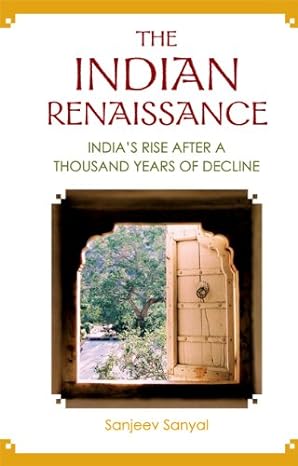
The Indian Renaissance: India’s Rise after a Thousand Years of Decline is a non-fiction book by Sanjeev Sanyal that examines India’s economic and cultural transformation from the 7th to the 17th century CE.
The book provides a unique perspective on the Indian subcontinent’s history by highlighting its achievements and contributions during a period often associated with decline and stagnation.
Key themes and Arguments :
- The book argues that the period of decline in India was exaggerated and that there were significant cultural and economic achievements during this period that set the foundation for India’s modern-day success.
- Sanyal highlights the role of regional kingdoms and trading networks in fostering cultural exchange and economic growth.
- The book also examines the impact of foreign invasions and colonialism on India’s development, and how India’s resilience and adaptability helped it to survive and thrive in the face of these challenges.
Analysis of the book’s impact :
- The Indian Renaissance has been praised for its fresh perspective on Indian history and for challenging traditional narratives of decline and stagnation.
- The book has sparked debate among scholars, with some criticizing its selective use of evidence and others praising its attempt to challenge Eurocentric perspectives on Indian history.
- The Indian Renaissance has been widely read and has contributed to a growing interest in Indian history and culture, both in India and abroad. It has also influenced other writers and scholars to re-examine traditional narratives of Indian history.
2. Land of the Seven Rivers: A Brief History of India’s Geography :

Land of the Seven Rivers: A Brief History of India’s Geography is a non-fiction book by Sanjeev Sanyal that explores the geography of India and its impact on the country’s history, culture, and society. The book provides a comprehensive overview of India’s physical and human geography, tracing its evolution from ancient times to the present day.
Overview of India’s geography :
- The book examines the diverse topography of India, including its rivers, mountains, plains, and coasts.
- Sanyal also explores the impact of climate and environmental factors on India’s development and its people.
Key themes and Arguments :
- Land of the Seven Rivers argues that India’s geography has played a crucial role in shaping its history and culture.
- Sanyal highlights the importance of rivers in India’s economic and cultural development, as well as their role in shaping political boundaries and cultural identities.
- The book also examines the impact of trade and migration on India’s geography and society, and how these factors have contributed to the country’s cultural and linguistic diversity.
Analysis of the book’s impact :
- Land of the Seven Rivers has been praised for its accessible writing style and its ability to make complex geographical concepts understandable to a general audience.
- The book has contributed to a growing interest in Indian geography and has been widely read by scholars and non-experts alike.
- Land of the Seven Rivers has also been influential in shaping public discourse on India’s environment and the need for sustainable development.
3. The Ocean of Churn: How the Indian Ocean Shaped Human History :
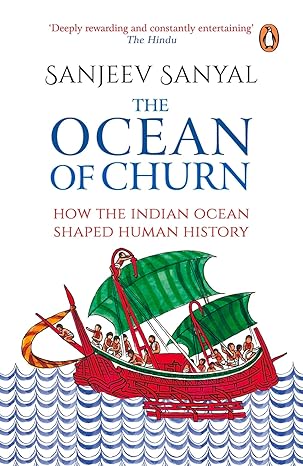
The Ocean of Churn: How the Indian Ocean Shaped Human History is a non-fiction book by Sanjeev Sanyal that explores the history of the Indian Ocean and its impact on human societies. The book provides a comprehensive overview of the Indian Ocean, its role in shaping global trade, and its influence on the development of civilization.
Overview of the Indian Ocean’s history :
- The book traces the history of the Indian Ocean from ancient times to the present day, exploring its importance as a hub of global trade and cultural exchange.
- Sanyal examines the role of maritime trade in the development of civilizations in India, East Africa, Southeast Asia, and the Middle East.
Key themes and Arguments :
- The Ocean of Churn argues that the Indian Ocean was a crucial factor in shaping human history and the development of civilizations.
- Sanyal highlights the importance of the Indian Ocean in fostering cultural exchange and religious syncretism, as well as its impact on the development of science, technology, and art.
- The book also examines the impact of colonialism and globalization on the Indian Ocean region, and the challenges facing countries that border the ocean today.
Analysis of the book’s impact :
- The Ocean of Churn has been widely praised for its ability to make complex historical concepts accessible to a general audience.
- The book has contributed to a growing interest in the history and culture of the Indian Ocean region and has been widely read by scholars and non-experts alike.
- The Ocean of Churn has also been influential in shaping public discourse on globalization and its impact on developing countries.
4. Life over Two Beers and Other Stories :

Life over Two Beers and Other Stories is a collection of short stories by Sanjeev Sanyal. The book explores a range of themes related to life in India, including love, family, identity, and social change.
Overview of the book :
- Life over Two Beers and Other Stories is a work of fiction that draws on Sanyal’s experiences growing up in India and his observations of Indian society.
- The book is divided into different sections, each of which explores a different aspect of life in India.
- Sanyal’s writing style is characterized by a mixture of humor, irony, and social commentary.
Key themes and stories :
- The stories in Life over Two Beers and Other Stories explore a range of themes related to life in contemporary India, including the challenges faced by young people in a rapidly changing society.
- Many of the stories focus on the experiences of middle-class Indians and their struggles to balance tradition and modernity.
- The book also touches on issues related to social inequality, including caste discrimination and gender inequality.
Analysis of the book’s impact :
- Life over Two Beers and Other Stories has been widely praised for its engaging writing style and its ability to capture the complexities of life in contemporary India.
- The book has been influential in shaping public discourse on the challenges facing young people in India and the need for social change.
- Life Over Two Beers and Other Stories has also been widely read by Indian and international audiences and has helped to raise the profile of contemporary Indian literature.
5. India in the Age of Ideas: Select Writings :
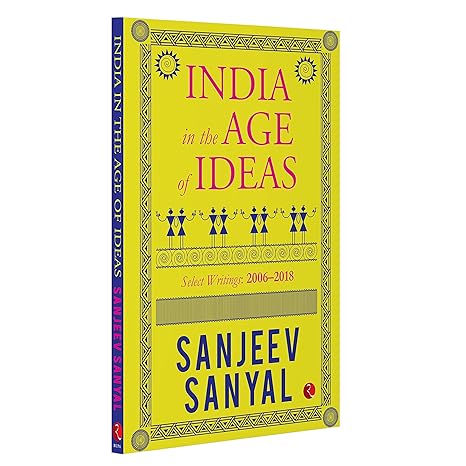
India in the Age of Ideas: Select Writings is a collection of essays and articles by Sanjeev Sanyal that explore a range of topics related to Indian history, culture, and politics. The book brings together Sanyal’s reflections on Indian society and its place in the world.
Overview of the book :
- India in the Age of Ideas: Select Writings is a collection of essays and articles written by Sanjeev Sanyal over several years.
- The book covers a range of topics related to Indian society, including politics, culture, history, and economics.
- Sanyal’s writing style is characterized by a mixture of intellectual rigor and accessible prose.
Key themes and Arguments :
- The essays in India in the Age of Ideas: Select Writings explore a range of themes related to Indian society, including its history, culture, and political economy.
- Sanyal argues that India is a complex and diverse society that is often misunderstood by outsiders.
- The book also explores the challenges facing India as it seeks to modernize and become a major player on the global stage.
Analysis of the book’s impact :
- India in the Age of Ideas: Select Writings has been widely read by scholars and non-experts alike, and has helped to shape public discourse on India and its place in the world.
- The book has been influential in raising awareness of the complexities of Indian society and the challenges facing the country as it seeks to modernize.
- India in the Age of Ideas: Select Writings has also been praised for its accessible prose and its ability to make complex ideas accessible to a general audience.
6. Revolutionaries: The Other Story of How India Won Its Freedom:
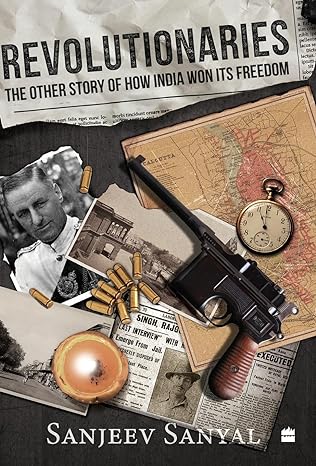
Revolutionaries: The Other Story of How India Won Its Freedom is a historical book by Sanjeev Sanyal that challenges the traditional narrative of India’s struggle for independence. The book provides an alternative perspective on the role of revolutionary leaders in India’s freedom movement.
Overview of the book :
- Revolutionaries: The Other Story of How India Won Its Freedom offers a fresh perspective on the Indian independence movement.
- The book focuses on the role of revolutionary leaders who are often overlooked in traditional narratives of the freedom struggle.
- Sanyal argues that these revolutionary leaders played a critical role in India’s fight for independence and that their contributions have been unfairly marginalized.
Key themes and Arguments :
- The book challenges the traditional narrative of India’s independence movement, which often emphasizes the role of nonviolent leaders like Gandhi and Nehru.
- Sanyal argues that revolutionary leaders like Bhagat Singh, Subhas Chandra Bose, and Chandrasekhar Azad played a critical role in the struggle for independence and that their contributions have been overlooked by mainstream historians.
- The book also explores the political and social context in which these revolutionary leaders operated and the challenges they faced in their fight for independence.
Analysis of the book’s impact :
- Revolutionaries: The Other Story of How India Won Its Freedom has been widely read and discussed in India, and has sparked a renewed interest in the role of revolutionary leaders in the independence movement.
- The book has been praised for its fresh perspective on India’s history, and for its ability to challenge traditional narratives and inspire critical thinking.
- Revolutionaries: The Other Story of How India Won Its Freedom has also been criticized by some for its controversial claims and its attempt to rewrite India’s history.
7. The Indian Renaissance: India’s Rise After A Thousand Years of Decline, World Scientific :
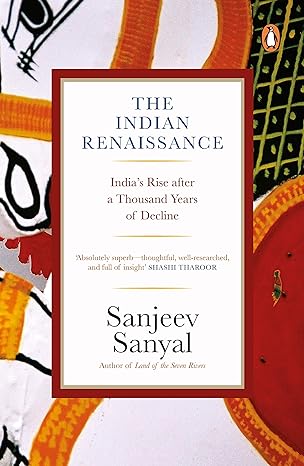
The Indian Renaissance: India’s Rise after a Thousand Years of Decline is a book by Sanjeev Sanyal that explores the historical and economic factors that contributed to India’s decline and subsequent rise as a major world power. The book provides a comprehensive overview of India’s history and its path to modernization.
Overview of the book :
- The Indian Renaissance: India’s Rise After A Thousand Years of Decline is a detailed analysis of India’s history, focusing on the period of decline and the subsequent rise of the country as a major world power.
- The book provides a comprehensive overview of India’s history, covering a period of over a thousand years.
- Sanyal argues that India’s decline was the result of a combination of factors, including colonialism, economic stagnation, and social and political fragmentation.
- The book also explores the role of various social and cultural movements, including the Indian Renaissance, in India’s rise as a modern nation.
Key themes and Arguments :
- The book challenges traditional narratives of India’s history, which often overlook the country’s decline and focus solely on its achievements.
- Sanyal argues that India’s decline was a complex and multifaceted process, shaped by a range of historical, economic, and social factors.
- The book also highlights the role of various social and cultural movements, such as the Indian Renaissance, in shaping India’s modern identity.
Analysis of the book’s impact :
- The Indian Renaissance: India’s Rise After A Thousand Years of Decline has been widely read and praised for its comprehensive overview of India’s history.
- The book has been particularly influential in challenging traditional narratives of India’s history, and in highlighting the complexity of the country’s historical trajectory.
- The Indian Renaissance: India’s Rise After A Thousand Years of Decline has also been criticized by some for its controversial claims and its focus on certain historical periods at the expense of others.
Sanjeev Sanyal’s Writing Style
Sanjeev Sanyal’s writing style can be described as engaging and accessible, with a strong emphasis on storytelling. He uses a narrative approach to history and geography, bringing to life the people and places he writes about.
One of his key techniques is the use of anecdotes and personal stories to illustrate larger historical and geographical concepts. This allows readers to connect emotionally with the material and makes it easier to remember key points.
Sanyal also employs vivid and descriptive language, using metaphors and similes to paint a picture of the world he is describing. He is skilled at simplifying complex ideas and understandably presenting them, without sacrificing accuracy or depth.
His writing has had a significant impact on readers, making history and geography more accessible and interesting to a wider audience. His books have been praised for their ability to connect readers to the people and places of India, and for their contribution to a greater understanding of the country’s history and culture.
Conclusion
In conclusion, Sanjeev Sanyal is an important figure in Indian literature, and his books are a must-read for anyone interested in understanding India’s rich history and culture. We encourage readers to explore his works and to appreciate his unique perspective on the Indian subcontinent.
FAQ
1. What is Sanjeev Sanyal’s writing philosophy?
Sanjeev Sanyal believes that writing should be accessible and engaging to a wide audience. He aims to make complex topics understandable and relatable to the average reader. He also values rigorous research and intellectual honesty in his writing.
2. Which is Sanjeev Sanyal’s most popular book?
Sanjeev Sanyal’s most popular book is “The Ocean of Churn: How the Indian Ocean Shaped Human History.” It has received critical acclaim and has been widely read in India and beyond.
3. What makes Sanjeev Sanyal’s writing unique?
Sanjeev Sanyal’s writing is unique in its ability to weave together historical facts, economic analysis, and cultural insights to provide a comprehensive and engaging view of India’s past and present. He also has a talent for explaining complex ideas in a clear and accessible manner, making his books appealing to a broad audience.
4. How does Sanjeev Sanyal research his books?
Sanjeev Sanyal’s research process involves extensive reading of primary and secondary sources, conducting interviews with experts, and traveling to relevant locations to gain a firsthand understanding of the subject matter. He also draws on his experience working in finance and economic policy to provide unique insights into the economic forces shaping India’s past and present.
5. What inspired Sanjeev Sanyal to become a writer?
Sanjeev Sanyal has always been interested in history and culture, and his work as an economist and policy advisor exposed him to the economic forces shaping India’s growth and development. Writing was a natural way for him to combine these interests and share his insights with a wider audience.

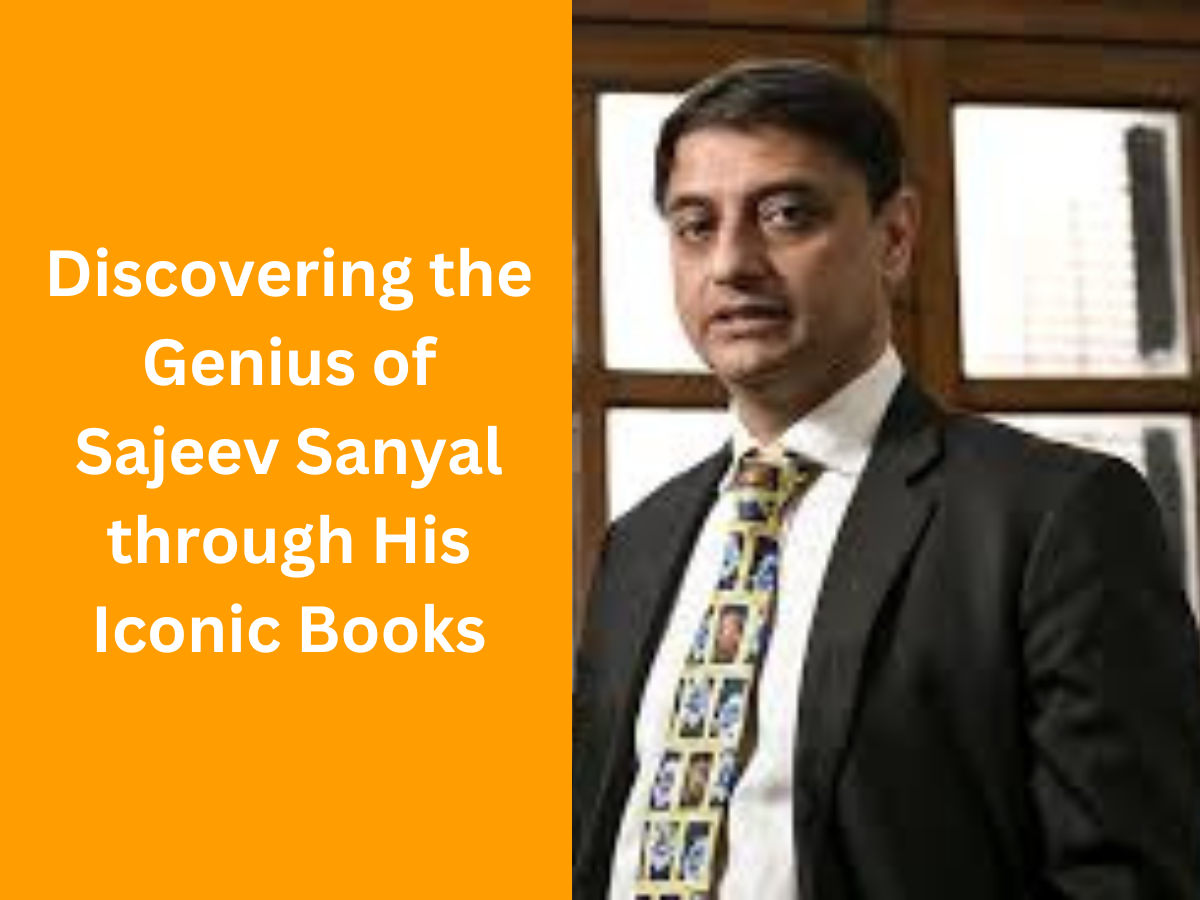



120 Comments
I don’t think the title of your article matches the content lol. Just kidding, mainly because I had some doubts after reading the article.
Психологическая реабилитация: Психологическая поддержка – один из главных аспектов нашего подхода. Мы предлагаем индивидуальные и групповые занятия, помогающие осознать зависимость, проработать эмоциональные травмы и сформировать новые модели поведения. Опытные психологи помогают пациентам понять причины своих зависимостей, что является важным шагом на пути к выздоровлению.
Получить дополнительные сведения – вывод из запоя клиника
Миссия нашего центра – оказание всесторонней помощи людям с зависимостями. Основные цели нашей работы:
Детальнее – наркологический вывод из запоя в казани
Образовательные программы: Мы уверены, что знания о зависимости и её последствиях играют важную роль в реабилитации. Мы информируем пациентов о механизмах действия наркотиков и алкоголя на организм, что способствует изменению их отношения к терапии и жизни без зависимостей.
Изучить вопрос глубже – вывод из запоя недорого казань
В современном обществе проблемы наркомании и алкоголизма приобрели особую актуальность, затрагивая не только отдельных людей, но и их близких, и сообщества. Эти зависимости оказывают негативное влияние не только на физическое здоровье, но и на психоэмоциональное состояние, нарушают социальные связи и ухудшают качество жизни. Наркологическая клиника “Здоровое Настоящее” предлагает комплексный и научно обоснованный подход к лечению зависимостей. Мы используем современные методы диагностики и терапии, чтобы помочь пациентам вернуть здоровье и полноценную жизнь.
Подробнее – https://srochnyj-vyvod-iz-zapoya.ru/
Обращение к наркологу позволяет избежать типичных ошибок самолечения и достичь стабильного результата. Квалифицированное вмешательство:
Получить больше информации – вывод из запоя цена
Затяжной запой — это состояние, при котором человек в течение нескольких дней не может прекратить употребление алкоголя без медицинской помощи. Такое состояние чревато тяжёлыми нарушениями в работе внутренних органов и психики. В Новосибирске и Новосибирской области доступен профессиональный вывод из запоя как на дому, так и в условиях стационара. Подход к лечению индивидуален, и основная цель — безопасно и эффективно устранить последствия интоксикации и предотвратить рецидив.
Получить больше информации – http://narko-zakodirovan2.ru/vyvod-iz-zapoya-na-domu-novosibirsk/
Затяжной запой — это состояние, при котором человек в течение нескольких дней не может прекратить употребление алкоголя без медицинской помощи. Такое состояние чревато тяжёлыми нарушениями в работе внутренних органов и психики. В Новосибирске и Новосибирской области доступен профессиональный вывод из запоя как на дому, так и в условиях стационара. Подход к лечению индивидуален, и основная цель — безопасно и эффективно устранить последствия интоксикации и предотвратить рецидив.
Подробнее – вывод из запоя круглосуточно
Врач может приехать в течение 1–2 часов после обращения. В стационар возможна экстренная госпитализация в тот же день.
Углубиться в тему – https://narko-zakodirovan2.ru/vyvod-iz-zapoya-na-domu-novosibirsk/
Врач может приехать в течение 1–2 часов после обращения. В стационар возможна экстренная госпитализация в тот же день.
Подробнее – http://
Обращение к наркологу позволяет избежать типичных ошибок самолечения и достичь стабильного результата. Квалифицированное вмешательство:
Получить дополнительные сведения – https://narko-zakodirovan2.ru/
Затяжной запой — это состояние, при котором человек в течение нескольких дней не может прекратить употребление алкоголя без медицинской помощи. Такое состояние чревато тяжёлыми нарушениями в работе внутренних органов и психики. В Новосибирске и Новосибирской области доступен профессиональный вывод из запоя как на дому, так и в условиях стационара. Подход к лечению индивидуален, и основная цель — безопасно и эффективно устранить последствия интоксикации и предотвратить рецидив.
Углубиться в тему – http://narko-zakodirovan2.ru
Показана в тяжёлых случаях или при наличии сопутствующих заболеваний. Лечение проходит под круглосуточным наблюдением врачей и медсестёр с постоянной корректировкой терапии.
Получить больше информации – вывод из запоя клиника в новосибирске
Затяжной запой — это состояние, при котором человек в течение нескольких дней не может прекратить употребление алкоголя без медицинской помощи. Такое состояние чревато тяжёлыми нарушениями в работе внутренних органов и психики. В Новосибирске и Новосибирской области доступен профессиональный вывод из запоя как на дому, так и в условиях стационара. Подход к лечению индивидуален, и основная цель — безопасно и эффективно устранить последствия интоксикации и предотвратить рецидив.
Разобраться лучше – vyvod-iz-zapoya-na-domu novosibirsk
Вывод из запоя может осуществляться в двух форматах — на дому и в стационаре. Выбор зависит от степени интоксикации, наличия осложнений и возможности обеспечить пациенту наблюдение в домашних условиях.
Выяснить больше – https://narko-zakodirovan2.ru/vyvod-iz-zapoya-czena-novosibirsk/
Вывод из запоя может осуществляться в двух форматах — на дому и в стационаре. Выбор зависит от степени интоксикации, наличия осложнений и возможности обеспечить пациенту наблюдение в домашних условиях.
Подробнее – narko-zakodirovan2.ru/
Врач может приехать в течение 1–2 часов после обращения. В стационар возможна экстренная госпитализация в тот же день.
Подробнее можно узнать тут – http://narko-zakodirovan2.ru/vyvod-iz-zapoya-na-domu-novosibirsk/
buy tiktok ads accounts buy tiktok ads accounts
tiktok agency account for sale https://buy-tiktok-business-account.org
buy tiktok business account https://tiktok-ads-agency-account.org
buy tiktok ads https://buy-tiktok-ads-accounts.org
buy tiktok ads https://buy-tiktok-ad-account.org
tiktok ads account for sale https://tiktok-agency-account-for-sale.org
tiktok ads account for sale https://tiktok-ads-account-for-sale.org
tiktok ads account for sale https://tiktok-ads-account-buy.org
buy tiktok ads https://buy-tiktok-ads-account.org
verified facebook business manager for sale https://buy-business-manager-accounts.org/
buy facebook bm https://verified-business-manager-for-sale.org/
facebook business manager account buy https://buy-bm.org/
buy facebook business manager https://buy-business-manager-verified.org
buy facebook verified business account buy business manager facebook
buy facebook business manager accounts https://buy-verified-business-manager.org
buy facebook business manager buy-verified-business-manager-account.org
verified facebook business manager for sale buy facebook business manager account
buy verified facebook buy-bm-account.org
google ads agency accounts https://buy-verified-ads-account.work
facebook business manager buy buy facebook ads accounts and business managers
buy adwords account google ads agency accounts
buy google ads https://sell-ads-account.click
google ads account for sale https://buy-ads-agency-account.top
buy aged google ads account google ads accounts for sale
google ads account for sale buy google ads
sell google ads account https://ads-account-buy.work/
buy verified google ads accounts buy adwords account
buy facebook ads account buying facebook accounts
adwords account for sale https://buy-ads-accounts.click
buy google ads agency account https://buy-ads-account.top
buy facebook accounts cheap https://ad-accounts-for-sale.work
buy fb ads account buy fb account
Эта информационная статья охватывает широкий спектр актуальных тем и вопросов. Мы стремимся осветить ключевые факты и события с ясностью и простотой, чтобы каждый читатель мог извлечь из нее полезные знания и полезные инсайты.
Выяснить больше – https://medalkoblog.ru/
fb accounts for sale buy facebook advertising
buy aged facebook ads account facebook accounts for sale
buy facebook accounts cheap https://ad-account-buy.top/
buy facebook ads account https://buy-ad-account.top/
buy facebook advertising accounts facebook ad accounts for sale
facebook ad account buy https://buy-adsaccounts.work/
продать аккаунт kupit-akkaunt.online
продажа аккаунтов маркетплейсов аккаунтов
продать аккаунт akkaunty-optom.live
покупка аккаунтов https://kupit-akkaunty-market.xyz/
покупка аккаунтов купить аккаунт
купить аккаунт https://akkaunt-magazin.online
магазин аккаунтов https://kupit-akkaunt.xyz
покупка аккаунтов https://rynok-akkauntov.top/
маркетплейс аккаунтов соцсетей akkaunty-na-prodazhu.pro
account market https://accounts-marketplace-best.pro
website for buying accounts https://accounts-marketplace.online
sell accounts https://social-accounts-marketplace.live
sell accounts https://buy-accounts.live/
sell accounts https://buy-accounts-shop.pro
accounts market https://buy-accounts.space
social media account marketplace https://social-accounts-marketplace.xyz
account selling platform https://accounts-marketplace.live
profitable account sales https://buy-best-accounts.org
accounts marketplace https://accounts-marketplace.xyz/
account acquisition https://accounts-offer.org
account exchange marketplace for ready-made accounts
accounts for sale account buying platform
accounts marketplace sell account
account sale secure account sales
account sale guaranteed accounts
account selling platform https://sale-social-accounts.org/
profitable account sales accounts-market-soc.org
accounts market buy pre-made account
buy and sell accounts buy accounts
buy and sell accounts purchase ready-made accounts
account exchange account acquisition
database of accounts for sale account trading service
buy account buy pre-made account
accounts marketplace account trading service
find accounts for sale https://social-accounts.org
secure account purchasing platform guaranteed accounts
account sale gaming account marketplace
account store secure account sales
account buying service account buying service
find accounts for sale account market
account buying platform account trading service
account purchase accounts market
website for selling accounts website for selling accounts
account buying platform website for buying accounts
find accounts for sale verified accounts for sale
buy pre-made account sell account
account buying service account market
Buy Pre-made Account Find Accounts for Sale
Website for Buying Accounts Account marketplace
Profitable Account Sales Accounts market
Secure Account Sales Secure Account Purchasing Platform
Account Store Account Purchase
Profitable Account Sales Account Selling Platform
Guaranteed Accounts Gaming account marketplace
Accounts marketplace Account Purchase
Buy and Sell Accounts Secure Account Sales
Find Accounts for Sale Account Market
заработок на аккаунтах магазин аккаунтов
магазин аккаунтов купить аккаунт
магазин аккаунтов социальных сетей магазин аккаунтов
магазин аккаунтов https://ploshadka-prodazha-akkauntov.ru
заработок на аккаунтах площадка для продажи аккаунтов
маркетплейс для реселлеров маркетплейс аккаунтов
купить аккаунт маркетплейс аккаунтов